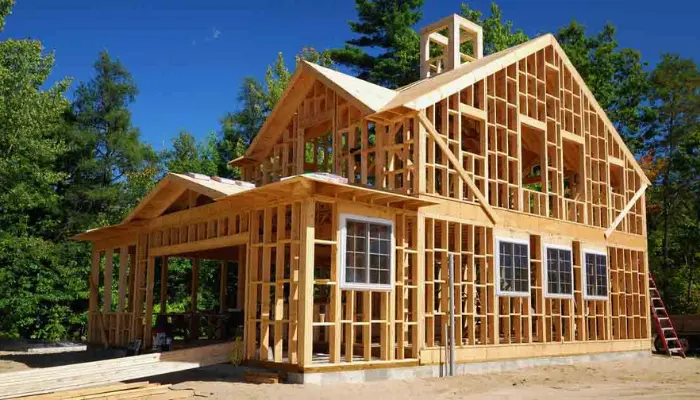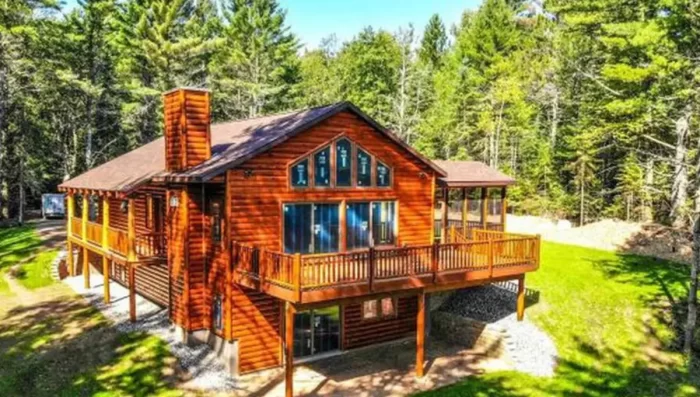Are you planning to build your dream home and are worried about the best wood to build a house? If you do not know what and how to choose? So this article will really give you a deeper insight into the different types of wood to build your home.
The best wood for a house depends on a number of things, including pricing, availability, and durability. However, let’s face it—nobody wants a home that is going to fall apart like a house of cards. So choose solid and durable woods like Douglas fir, redwood, and cedar. You don’t want your house to be the joke in the neighborhood, I am sure you of that.
Now, let’s take a moment to understand the flexibility of wood before getting into the specifics of the best wood to build a house.
It’s a material that has been employed in the building for years of age and for a good reason. In addition to being durable and long-lasting, it also has a cozy, natural feel that gives any house personality.
But how can you pick the ideal type of wood for your home when there are so many options? We’ve got you covered, so don’t worry.
We’ll examine the many types of wood frequently used in house construction in this blog, along with their benefits and drawbacks. So take a seat back, unwind, and let’s search for the ideal wood for your ideal home.
Things to Consider When Choosing Wood for Building a House
There are a number of things to take into consideration when choosing the best kind of wood for a house. Some of the most significant ones are listed below.
- Moisture Resistance: It’s crucial to have a home that can withstand moisture, especially if you’re building it close or in a region with high humidity. Rot, rotting, and insect damage can be avoided by selecting a type of wood that is moisture-resistant.
- Durability: Durability is one of the most important factors to take into account when selecting wood for a house. You should pick a wood type that can last the test of time and fend off decay, insects, and other elements that could harm your house.
- Aesthetic Appeal: The aesthetic value of the wood should also be taken into account. You want to pick a type of wood that enhances the aesthetics and architecture of your house.
- Strength: When building a house, it’s important to take the wood’s strength into account as well. Selecting a type of wood that can withstand the weight of the construction of your home and withstand damage from weather conditions like wind, rain, and snow is important.
- Sustainability: To have the least possible negative environmental impact, it is crucial to choose wood from sustainable sources.
- Availability: Particular kinds of wood could be more expensive or more difficult to get because they aren’t as common where you live.
- Cost: You should think about how much the wood will cost and whether it fits inside your budget because building a house is a significant investment.

List of the best wood to Build a House
1. Douglas Fir
A softwood widely utilized to construct homes is Douglas fir. Its durability and strength make it perfect for structural framing and other load-bearing applications, and its warm, organic appearance may give a home more personality. It can cost more than some other softwoods and is subject to dampness.
Pros:
- Because it is a sturdy and long-lasting wood, Douglas fir works well for load-bearing applications like structural framing.
- Because so many Douglas fir forests are carefully maintained, it is a green product.
- It can be utilized in many different ways, such as cabinetry, flooring, and framing.
- Given its widespread availability in North America, Douglas fir is a preferred material for construction there.
Cons:
- Since Douglas fir can be more expensive than certain other softwoods, this may affect how much a building project will cost in total.
- Given that Douglas fir is less moisture-resistant than some other species of wood, it may be more vulnerable to rot and decay if not properly cared for.
- If handled improperly during installation, Douglas fir can be prone to splitting.
2. cedar
The softwoods like cedar are frequently utilized to create buildings. Although it can be more expensive and need ongoing upkeep, it is inherently resistant to rot and insects.
Pros:
- Natural oils in cedar make it resistant to rot and insect attack.
- Moths and other insects can be repelled by the pleasant, natural scent of cedar.
- a timber that is robust and resilient that can tolerate adverse weather.
- Since many cedar kinds of wood are carefully managed, choosing cedar is environmentally friendly.
Cons:
- The price of cedar can be higher than that of some other varieties of wood.
- It might be more prone to scratches and dents.
- To keep its beauty and durability, it still needs routine upkeep like sealing or staining.
3. Spruce
Spruce is a type of softwood that is frequently used in construction, particularly for the framing and sheathing of homes and businesses. It is renowned for its hardness and strength, and it has a pale color and a straight grain.
Spruce can be treated with preservatives to boost its durability even if it is not inherently resistant to decay and insects. Additionally, plywood, musical instruments, and furniture are all made from spruce.
Pros:
- It is a dependable option for load-bearing applications due of its strength and rigidity.
- Spruce is simple to work with and has a neat, consistent appearance because to its straight grain and light color.
- Additionally, plywood, musical instruments, and furniture are all made from spruce.
Cons:
- Highly susceptible to insects and loss
- Spruce might not be widely available everywhere.
- If not seasoned and maintained appropriately
4. pine
Softwoods like pine are frequently utilized in building, furniture production, and other woodworking applications.
It has a unique grain pattern and knots that give it a rustic, organic appearance. Pine is a well-liked material for DIY projects because it’s reasonably simple to deal with.
It must be treated with preservatives to boost its endurance because it is a soft wood and is not inherently resistant to insects or deterioration.
Pine is a cost-effective option for many construction and woodworking tasks since it is readily accessible and reasonably priced.
Pros:
- Cost-effective
- Sustainability
- Versatility
- Appearance
Cons:
- Susceptible to decay and insects
- Softness
- Warping and splitting
5. Redwood
Due to its natural beauty and durability, redwood is a popular material for homes. It is a softwood that has a built-in resistance to rot, degradation, and insect harm.
Redwood is sturdy and less prone to bend or twist because it also has a low shrinkage factor. Due to its inherent resistance to moisture, it is frequently used for siding and decking.
Pros:
- A wood with natural durability is redwood.
- Redwood’s stability is well known.
- Redwood has a characteristic red hue and a straight, close-grained structure.
- Since many redwood forests are carefully managed, choosing them is environmentally friendly.
Cons:
- Since redwood is largely grown in California, it may not be as readily available.
- Redwood is a soft wood, thus it could be more susceptible to dents.
- Redwood costs more than a lot of other types of wood.
6. oak
A hardwood with an international reputation for strength and toughness is oak. Due to its inherent beauty and durability, it is frequently used for furniture, flooring, and cabinets.
Oak has a built-in resistance to rot and insect attack. It costs more than softwoods like Douglas Fir, Cedar, and Redwood, though.
Pros:
- A durable and long-lasting wood is oak.
- Oak has a characteristic color and grain pattern that give it a timeless, traditional appearance.
- The intrinsic resilience of oak to moisture
- There is a lot of oak accessible all over the world.
Cons:
- Because oak is a hardwood, working with it can be challenging.
- Due to its density, oak can be heavy and challenging to carry or transport.
- If not properly cared for or maintained, oak can be vulnerable to fungi and insects that consume wood.
- In general, oak costs more than other types of wood.
FAQs about Best Wood to Build a House
q1. which type of wood to build a garden house?
Ans. Due to their natural resistance to rot, insects, and moisture damage, cedar, and redwood are ideal materials for garden cottages.
q2. What is the most affordable and durable type of wood to use for building houses?
Ans. Pine is frequently thought of as the most cost-effective and long-lasting kind of timber for the construction of homes. It may be treated to resist decay and insect damage and is generally accessible.
q3. How much wood does it take to build a 2000 square feet house?
Ans. Depending on the design and the materials chosen for construction, a 2000-square-foot house may or may not require a certain amount of wood. In general, 12,000 to 16,000 board feet of timber may be required.
q4. Can a wood foundation be used to build a house?
Ans. Yes, a wood base can be used to construct a home, but this is less frequent than using a concrete or masonry foundation. To avoid moisture damage, pressure-treated timber must be used, together with suitable waterproofing and drainage systems.
Tell Us In The Comments As Per You Which Is The Best Wood to Build a House
Additionally, don’t forget to read the other post on ideas for making houses, which will provide you with an insightful and helpful perspective.
